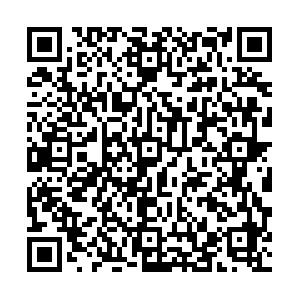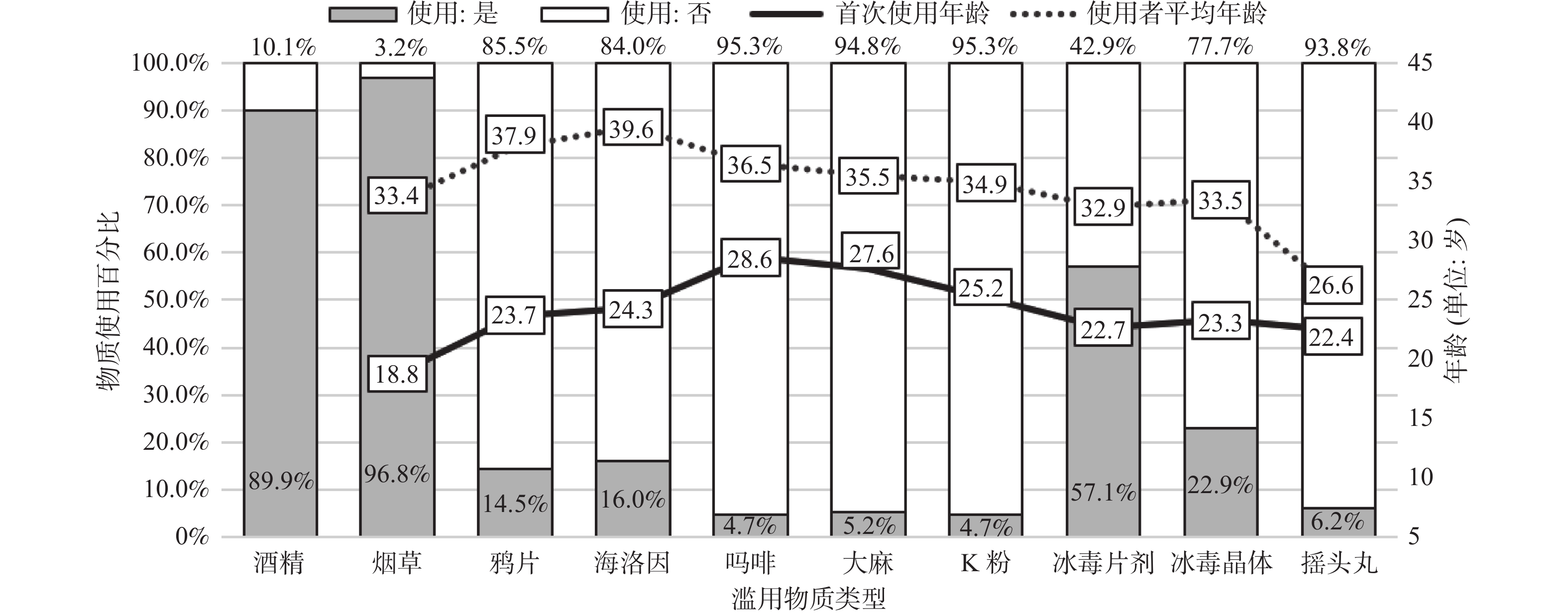Research about Adverse Childhood Experiences and Behavior of Injection Drug Use among Border Drug Users
-
摘要:
目的 了解边境地区吸毒人群的基本特征,探讨目标人群童年期负性事件与成年期注射吸毒行为的关系。 方法 采用自编毒品使用及不良健康行为调查问卷、童年期负性事件调查问卷对某边境地区的405名吸毒者进行现场调查。 结果 目标人群存在注射吸毒行为的人占12.3%,成年期出现注射吸毒行为以男性、39岁以上、少数民族、未婚、有小孩、小学及以下文化程度及有职业的人群为主;海洛因平均使用年限15年,冰毒片剂和晶体10年左右,摇头丸为13年;首次使用毒品的平均年龄22~28岁,ATS的首次使用平均年龄22~23岁。ACEs事件超过1件以上者在存在注射吸毒行为者中占84.0%。Logistics回归结果显示,ACE严重程度、年龄及民族可能是目标人群存在注射吸毒行为的影响因素(P < 0.05)。 结论 在边境吸毒人群中,有童年期负性事件经历者较多,与成年后注射吸毒行为密切相关,对戒毒实践及早期干预有一定指导意义。 Abstract:Objective To understand the basic features of the border drug users, and explore association between adverse childhood experiences (ACEs) and injecting drug use behavior among border drug users. Methods The cross-sectional study was conducted from January to June, 2021. 405 drug users in a border area were collected by questionnaire about general condition of drug users, adverse health behaviors, and injecting drug use behaviors. Results Those who injecting drug use behavior accounted for 12.3% among target population, and those who injecting drug use were most male, 39 years old above, minorities, the married, having children, with education degree of primary school and below and having professional people. The average age of heroin use was 15 years, about 10 years for methamphetamine tablets and crystals and 13 years for ecstasy. The average age of first drug use was 22-28 years, and was 22-23 years for first ATS use. ACEs of more than one event accounted for 84.0% among those who with injecting drug use behavior. Logistic regression results showed that ACEs severity, age and ethnicity possibly were the influencing factors of injecting drug use behavior among target population (P < 0.05). Conclusion Among the border drug users, there are many negative events in childhood, which is closely related to injecting drug use behavior in adulthood, which provides guiding evidence for drug treatment practice and early intervention. -
表 1 边境吸毒人群的人口学特征 [n(%)]
Table 1. Demographic characteristics of drug users in border areas [n(%)]
人口学特征 吸毒者 是否存在注射吸毒行为 P 否 是 年龄(岁) < 0.001* < 27 98(24.2) 91(25.6) 7(14.0) 27~39 202(49.9) 186(52.4) 16(32.0) > 39 105(25.9) 78(22.0) 27(54.0) 性别 0.005* 男 398(98.3) 352(99.2) 46(92.0) 女 7(1.7) 3(0.8) 4(8.0) 民族 < 0.001* 汉族 83(20.5) 63(17.7) 20(40.0) 少数民族 322(79.5) 292(82.3) 30(60.0) 婚姻状况 0.105 未婚 290(71.6) 259(73.0) 31(62.0) 已婚 115(28.4) 96(27.0) 19(38.0) 育有小孩 0.939 否 139(34.5) 122(34.4) 17(66.0) 是 266(65.5) 223(65.6) 33(34.0) 教育程度 0.050 小学及以下 206(50.9) 187(52.7) 19(38.0) 中学及以上 199(49.1) 168(47.3) 31(62.0) 职业 0.072 无业 76(18.8) 62(17.5) 14(28.0) 有职业 329(81.2) 293(82.5) 36(72.0) 经济来源 0.329 工作收入 229(56.5) 204(57.5) 25(50.0) 他人接济 176(43.5) 151(42.5) 25(50.0) *P < 0.05。 表 2 边境吸毒人群ACEs事件是否存在注射吸毒行为的分布[n(%)]
Table 2. Distribution of ACEs among border drug users with injecting drug use [n(%)]
ACE各类事件 [n(%)] 是否存在注射吸毒行为 P 否 是 是否有ACEs(含9项事件) < 0.001# 否 18(4.4) 10(2.8) 8(16.0) 是 387(95.6) 346(97.2) 42(84.0) ACE严重程度 < 0.001# 无 18(4.4) 10(2.8) 8(16.0) 轻 105(25.9) 89(25.0) 16(32.0) 中 94(23.2) 86(24.2) 8(16.0) 重 188(46.6) 171(48.0) 18(36.0) (1)家里是否有人关心我 < 0.001# 否 25(6.2) 15(4.2) 10(20.0) 是 380(93.8) 341(95.8) 40(80.0) (2)家里是否有人向我说过侮辱性或让我伤心的话 0.636 否 230(56.8) 201(56.5) 30(60.0) 是 175(43.2) 155(43.5) 20(40.0) (3)是否发生过性方面的事情/性虐待/有性色彩方式触摸 0.403* 否 374(92.3) 327(91.9) 48(96.0) 是 31(7.7) 29(8.1) 2(4.0) (4)是否有人照顾我、保护我/关心我的身体健康 0.051 否 328(81.0) 283(79.5) 45(90.0) 是 78(19.0) 73(20.5) 5(10.0) (5)家里是否人重视我/爱我 0.171 否 214(52.8) 184(51.7) 31(62.0) 是 191(47.2) 172(48.3) 19(38.0) (6)是否觉得父母希望从没生过我/觉得家里有人恨我 0.048# 否 275(67.7) 235(66.0) 40(80.0) 是 130(32.1) 121(34.0) 10(20.0) (7)家里是否有人打我/用皮带等惩罚我/受到了躯体虐待 0.310 否 384(94.8) 339(95.2) 46(92.0) 是 21(5.2) 17(4.8) 4(8.0) (8)是否觉得家人没有关系亲密/家庭状况需要改善 0.697 否 290(71.6) 254(71.3) 37(74.0) 是 115(28.4) 102(28.7) 13(26.0) (9)家人是否因为酗酒吸毒而不能照顾家庭 0.095 否 215(53.1) 183(51.4) 32(64.0) 是 190(46.9) 173(48.6) 18(36.0) 注:*为Fisher确切检验,#P < 0.05。 表 3 变量赋值表
Table 3. Variable assessment of logistic regression model
变量 赋值 ACE严重程度 O分 = 无,1~2分 = 轻,
3分 = 中,≥4分 = 重性别 女 = 0,男 = 1 年龄 连续变量 民族 汉族 = 0,少数民族 = 1 婚姻状况 未婚 = 0,已婚 = 1 育有子女 否 = 0,是 = 1 教育程度 中学及以上 = 0,小学及以下 = 1 职业 无业 = 0,职业 = 1 经济来源 工作收入 = 0,他人接济 = 1 跨境 否 = 0,是 = 1 首次毒品使用年龄 连续变量 表 4 注射吸毒者及其影响因素logistics回归分析
Table 4. Logistics regression analysis of injecting drug users and their influencing factors
因素 B值 SE Wald值 OR 95% CI P 常量 −1.61 0.815 3.905 0.2 0.048 ACE严重程度得分(ref:无) 9.194 0.027 轻 −1.111 0.615 3.261 0.329 0.098,1.100 0.071 中 −1.594 0.666 5.727 0.203 0.055,0.749 0.017 重 −1.726 0.607 8.078 0.178 0.054,0.585 0.004 年龄 0.05 0.015 10.488 1.051 1.020,1.083 0.001 民族:少数民族vs 汉族 −0.966 0.356 7.348 0.380 0.189,0.765 0.007 -
[1] 2020年中国毒情形势报告[EB/OL].(2021-07-16)[2021-12-29]. http://www.nncc626.com/2021-07/16/c_1211244064.htm.Drug situation in China (2020)[EB/OL]. (2021-07-16)[2021-12-29]. http://www.nncc626.com/2021-07/16/c_1211244064.htm. [2] Rhee T G,Barry L C,Kuchel G A,et al. Associations of Adverse Childhood Experiences with Past-Year DSM-5 Psychiatric and Substance Use Disorders in Older Adults[J]. Journal of the American Geriatrics Society,2019,67(10):2085-2093. doi: 10.1111/jgs.16032 [3] Banducci A N,Hoffman E,Lejuez C W,et al. The relationship between child abuse and negative outcomes among substance users:psychopathology,health,and comorbidities[J]. Addictive Behaviors,2014,39(10):1522-1527. doi: 10.1016/j.addbeh.2014.05.023 [4] Bellis M A,Hardcastle K,Ford K,et al. Does continuous trusted adult support in childhood impart life-course resilience against adverse childhood experiences - a retrospective study on adult health-harming behaviours and mental well-being[J]. BMC Psychiatry,2017,17(1):110. doi: 10.1186/s12888-017-1260-z [5] Hughes K,Bellis M A,Hardcastle K A,et al. The effect of multiple adverse childhood experiences on health:a systematic review and meta-analysis[J]. The Lancet Public Health,2017,2(8):e356-e366. doi: 10.1016/S2468-2667(17)30118-4 [6] Prangnell A,Voon P,Shulha H,et al. The relationship between childhood emotional abuse and chronic pain among people who inject drugs in Vancouver,Canada[J]. Child Abuse & Neglect,2019,93(c):119-127. [7] Mclaughlin M,Amaya A,Klevens M,et al. A Review of Factors Associated with Age of First Injection[J]. Journal of Psychoactive Drugs,2020,52(5):412-420. doi: 10.1080/02791072.2020.1804648 [8] Lee W,Ti L,Marshall B D,et al. Childhood Sexual Abuse and Syringe Sharing Among People Who Inject Drugs[J]. AIDS and Behavior,2015,19(8):1415-1422. doi: 10.1007/s10461-014-0930-9 [9] 美国精神医学学会. 张道龙译. 精神障碍诊断学统计手册[M]. 第5版. 北京: 北京大学出版社, 2015: 7. [10] Bernstein D P,Stein J A,Newcomb M D,et al. Development and validation of a brief screening version of the Childhood Trauma Questionnaire[J]. Child Abuse & Neglect,2003,27(2):169-190. [11] Grant B F,Goldstein R B,Saha T D,et al. Epidemiology of DSM-5 Alcohol Use Disorder:Results From the National Epidemiologic Survey on Alcohol and Related Conditions III[J]. JAMA Psychiatry,2015,72(8):757-766. doi: 10.1001/jamapsychiatry.2015.0584 [12] Tang S,Jones C M,Wisdom A,et al. Adverse childhood experiences and stimulant use disorders among adults in the United States[J]. Psychiatry Research,2021,299(5):113870. doi: 10.1016/j.psychres.2021.113870 [13] Kerr T,Stoltz J A,Marshall B D,et al. Childhood trauma and injection drug use among high-risk youth[J]. The Journal of Adolescent Health:official publication of the Society for Adolescent Medicine,2009,45(3):300-302. [14] He J,Yan X,Wang R,et al. Does Childhood Adversity Lead to Drug Addiction in Adulthood? A Study of Serial Mediators Based on Resilience and Depression[J]. Frontiers in Psychiatry,2022:13871459. [15] Taplin C,Saddichha S,Li K,et al. Family history of alcohol and drug abuse,childhood trauma,and age of first drug injection[J]. Substance Use & Misuse,2014,49(10):1311-1316. [16] Abelson J,Treloar C,Crawford J,et al. Some characteristics of early-onset injection drug users prior to and at the time of their first injection[J]. Addiction (Abingdon,England),2006,101(4):548-555. doi: 10.1111/j.1360-0443.2006.01379.x [17] 李静,李云鹏. 全球化背景下“金三角”地区跨国毒品犯罪研究[J]. 云南警官学院学报,2021,(3):11-18. doi: 10.3969/j.issn.1672-6057.2021.02.002 -






 下载:
下载:


